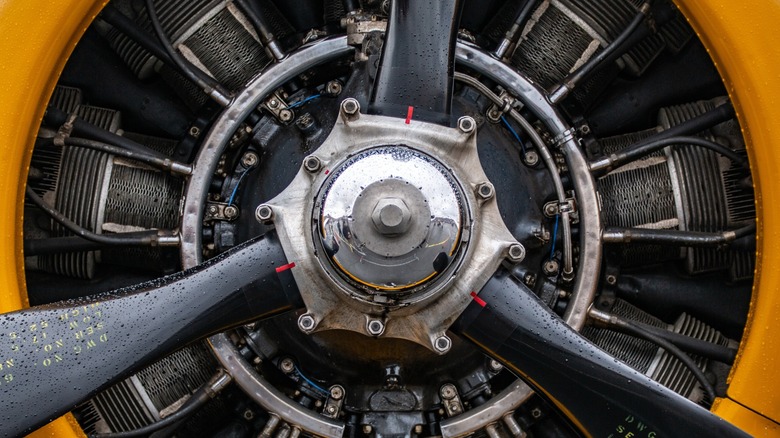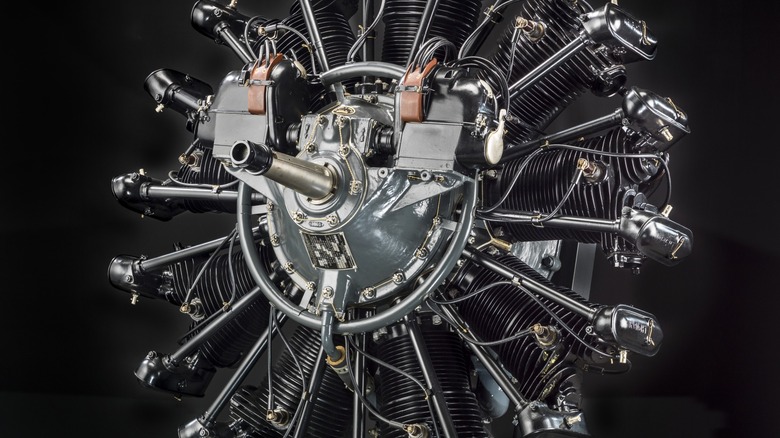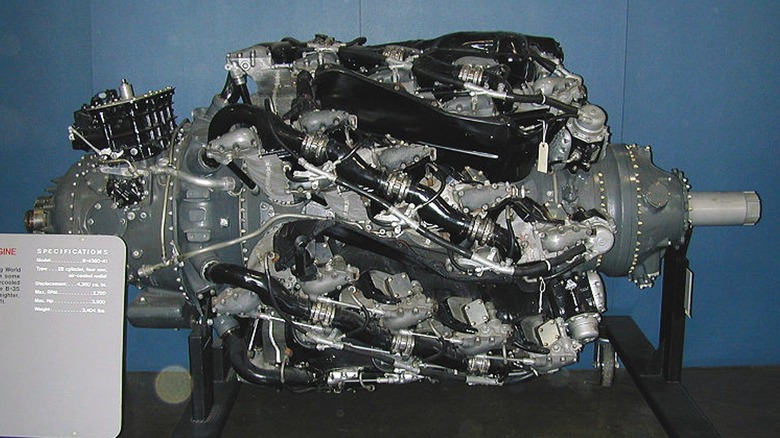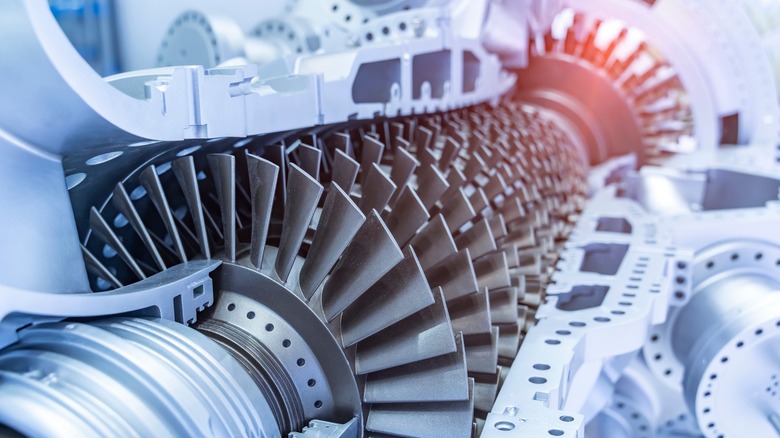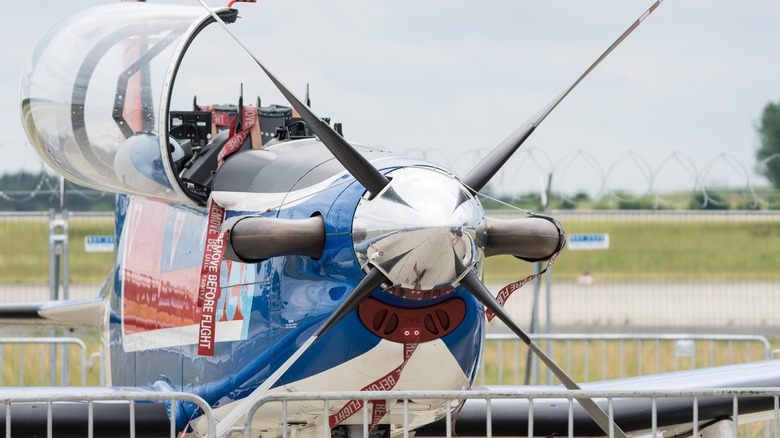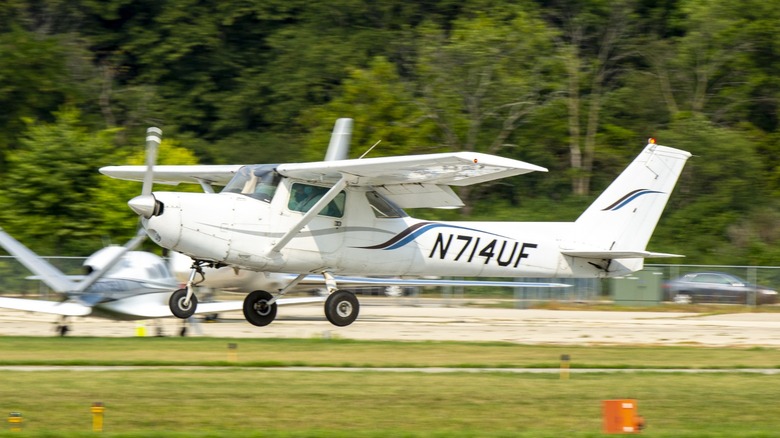What Disadvantages Do Radial Engines Have And Why Aren't They Used Much Anymore?
If you look at aircraft from the Second World War or earlier, you'll notice that many of them have engines with large frontal areas and cylinders arranged about the propeller crankshaft. This a radial engine, and it was popular at that time because of the massive power it could bring, with the most powerful radials outputting up to 3,500 horsepower or more. Aside from that, radials are tough engines that can make it home even with heavy battle damage.
That's because a radial engine is air-cooled, meaning it doesn't need the water coolant hoses and tanks that other engine types (like the V-engine) need to operate. If a radial engine gets some damage, it could potentially limp back home. But if a V-engine gets a damaged coolant hose that causes it to lose its coolant, the engine will seize up, forcing the pilot to bail.
This was one of the weaknesses of the P-51 Mustang, which used an Allison V-1710 engine. But despite these advantages, the radial engine has a couple of disadvantages, too. So, what are the drawbacks of the radial engine, and why do most aircraft no longer use them to fly?
It has a massive frontal area that bring more drag
The biggest drawback of the radial engine is its massive frontal area. This adds a lot of drag compared to the V-engine, which has a smaller frontal profile. Nevertheless, the massive power output of radial engines (compared to inline or V-engines) more than compensated for this difference.
At the beginning of the war, many fighter planes used inline or V-engine because of the need for a small, streamlined frontal profile. But as engine cowl technology progressed in the mid-1940s, we started seeing air-cooled radial engines on fighter planes, like the American Republic P-47 Thunderbolt (which was the basis of the A-10 Thunderbolt II's initial name before it was called the Warthog) and the German Focke Wulf FW 190.
Nevertheless, long-range bombers and other larger aircraft that needed efficiency, reliability, and survivability over maneuverability and agility often used radial engines. This included the Boeing B-17, Douglas C-47, and Dornier Do-17. That is not to say that other bombers didn't use inline or V-engines, too, like the Avro Lancaster and Heinkel He 111.
The rear bank of pistons of multi-row radial engines are difficult to cool
One more disadvantage of the radial engine is that it's difficult to cool the pistons that are not in front of the engine. Since radials are mostly air-cooled, the front row of pistons has no issues getting cooled by the air coming from the propeller. However, as planes became heavier and needed more pistons, engine manufacturers added more and more rows of pistons to the radial engine.
The largest radial engine ever to enter service, the Pratt & Whitney Wasp Major R-4360-59B, had four rows of seven cylinders. This allowed the engine to produce 4,300 hp, but it also meant that the rear rows were prone to overheating because they often didn't receive enough air to cool them down. This has become so bad that its aircrews often joked about the B-36 Peacemaker, which had six radial and four jet engines, as having "two turning, two burning, two smoking, two chocking, and two more unaccounted for."
[ Featured Image by Highflier / Wikimedia Commons | Cropped and scaled | CC BY-SA 3.0 ]
Turbine engines have better power-to-weight ratio
Despite these drawbacks, the power of radial engines made them ideal for military applications. However, technological advancements have made them obsolete. That's because the arrival of the jet engine allowed engines to output more power for the same weight.
Soon, jet power supplanted the radial in both fighters and bombers. The first American jet fighter, the Bell P-59 Airacomet, wasn't exactly a roaring success, but the Lockheed P-80 Shooting Star, Republic F-84 Thunderjet, and North American F-86 Sabre soon replaced the aging propeller-driven fighters of the USAF and faced the Soviet-made MiG-15s in Operation MiG Alley during the Korean War. The B-36 Peacemaker bomber, which used a combination of radial and jet engines, was also eventually replaced in 1958 by the B-52 Stratofortress, which has eight jet engines and are still flying today.
Even propeller-driven military aircraft, like the C-130 Hercules, which was the largest plane to ever land on an aircraft carrier, used a turbine engine to drive its propellers. These aircraft use turboprop engines, and they're entirely different from piston engines like the radial.
Turbine engines are more reliable and fuel efficient
Aside from the fact that jet engines are more powerful than radial engines, they're also more reliable. Turbine engines have fewer moving parts compared to radial engines, meaning they're smoother and deliver fewer vibrations (therefore less wear-and-tear) to the airframe. Aside from this, turbine engines usually have a longer 'time-between-overhaul' (TBO) or maintenance period, meaning you don't have to service it as often. This leads to a lower maintenance cost for every hour that you fly the plane.
Furthermore, jet engines can operate normally in a wider temperature range versus piston engines, which can easily be affected by higher or lower temperatures. For example, when you shut off a hot engine, the fuel in the fuel lines could turn into vapor, thus making it difficult or impossible to restart the aircraft until it cools down fully. This is called vapor lock and could be an issue for aircraft that need a quick turnaround, like military aircraft getting serviced in between missions.
Boxer engines are cheaper to fly and maintain
While the turbine engine has basically taken over military and commercial flying, how about general aviation? Most of these planes still use piston engines, especially as they're still cheaper to acquire, so why don't they use radials?
That's because the four- or six-cylinder horizontally opposed engines you find on most general aviation aircraft are simpler, cheaper, and easier to maintain than radial engines. In fact, all of the best planes for getting your private pilot's license use boxer engines exactly because of these reasons.
Unfortunately, the radial engine is becoming a rarer and rarer engine every year. There are a few aircraft that still have this engine type, though they're mostly historical warbirds that are carefully maintained by collectors, museums, and those who love history and planes. So, if you want to fly on a plane with a radial engine, you better find one as soon as you can.
